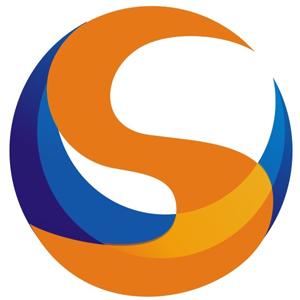Outline
- Introduction
- Economic Growth Slowdown
- Economic Trend Analysis
- Inflation and Interest Rate Fluctuations
- Policy Change Trends
- Energy Policy and Environmental Regulations
- Government Procurement Policies
- Cybersecurity Regulations
- Market Impact and Changes
- Increasing Demand
- Technological Innovation and Standardization
- Accelerated Industry Consolidation
- Future Trend Analysis
- Increased Government Support
- Diversified Market Demand
- Final Words
The United States is navigating a complex economic landscape. This can be witnessed by periodic growth rate fluctuations, persistent inflationary pressures, and interest rate variations. These dynamics have a cascading effect on consumer behavior and investment patterns across industries, and the smart light control market is no exception.
Meanwhile, government policies such as energy efficiency mandates, the quest for sustainable policies, and green initiatives are shaping the business environment, fostering innovation, and opening new opportunities for growth.
This article examines the interplay between U.S. economic trends and policy shifts and their impact on the smart light control market.

Here is a table analysing the impact of US economic and policy changes.
| Category | Key Insights |
| Market Growth | Smart lighting market projected to grow from $18.08 billion (2023) to $78.24 billion (2031) at 20.1% CAGR. |
| Government Funding | $27 billion Greenhouse Gas Reduction Fund to support clean energy and climate projects. |
| Energy Efficiency | 43% of energy costs in commercial buildings attributed to lighting; smart systems save up to 30%. |
| Technological Advancements | Over 60% of new smart lighting systems incorporate IoT connectivity and advanced automation. |
| Cybersecurity Emphasis | Federal Cyber Trust Mark introduced to ensure smart lighting systems meet strict cybersecurity standards. |
| Infrastructure Investments | $550 billion from the Infrastructure Investment and Jobs Act to modernize smart city technologies. |
| Market Consolidation | Expected 20% of smart lighting firms to merge or acquire smaller players by 2025 due to intense competition. |
| Policy Impact | 35% growth in demand attributed to energy-efficient policies and government procurement programs. |
Economic Growth Slowdown
Though the economy of the United States has experienced a downturn in growth recently, the smart lighting market is projected to expand significantly.
Some estimates show a growth trajectory from $18.33 billion in 2024 to $137.24 billion by 2035, counting to a CAGR of 20.08%. This robust growth indicates sustained consumer interest in smart lighting solutions, even amid broader economic challenges.
Economic Trend Analysis
The demand for smart lighting products continues to rise as consumers are concerned about energy efficiency and their integration with smart home ecosystems.
The study of Parks Associates reports that the number of consumers desiring smart lighting products has grown four times. At the same time, nearly one-third of potential consumers factored interoperability as an important criterion. Thus, smart lighting becomes even more enticing in difficult economic times.
Here’s a table summarizing recent statistics reflecting the slowdown in U.S. economic growth and forecasting trends for the upcoming year.
| Indicator | 2023 | 2024 | 2025 (Forecast) |
| Real GDP Growth Rate | 2.9% | 2.8% | 2.2% |
| Quarterly GDP Growth (Q1) | 3.4% | 1.6% | N/A |
| Inflation Rate | 4.1% | 2.9% | 1.9% |
| Current Account Deficit | N/A | $310.9B | N/A |
| Unemployment Rate | 3.6% | 4.1% | 4.4% |
Inflation and Interest Rate Fluctuations
Investment decisions in smart lighting systems are mostly dictated by the changes in interest rates. Low interest rates reduce a person’s cost of borrowing and create an environment not only for property improvements but also for smart lighting installations.
High interest rates, on the other hand, can result in high borrowing costs and then would dissuade the investment in such technologies. Therefore, interest rate trends play a pivotal role in shaping the adoption of smart lighting solutions.
Policy Change Trends
New regulations by the government of the U.S., such as the Energy Independence and Security Act of 2007, will provide performance standards that incite consumers to “casting off” incandescent bulbs in order to promote energy-efficient alternatives such as LEDs.
In addition to this are the investments raised by the Bipartisan Infrastructure Law and the Inflation Reduction Act for energy and climate initiatives, integrating smart building technologies into infrastructure projects.
These policy shifts have enhanced market access for smart lighting solutions, thus motivating manufacturers to create innovations in line with energy efficiency and environmental standards.
Energy Policy and Environmental Regulations
The U.S. government is also making efforts to promote energy conservation and emission reduction. Against this backdrop, the Energy Star program has significantly contributed to emissions reductions. Its 2020 efforts equated to more than a 5% reduction in U.S. total greenhouse gas emissions.
These initiatives support the integration of smart lighting systems that comply with stringent energy efficiency and environmental regulations.
Government Procurement Policies
Preference for procuring and using energy-efficient lighting in federal buildings is another step by the U.S. General Services Administration.
This prioritization not only promotes the sales of smart light control systems but also sets a precedent for energy efficiency in public sector procurement, influencing broader market trends toward sustainable lighting solutions.
Cybersecurity Regulations
The U.S. Department of Energy and the Federal Communications Commission are increasing cybersecurity standards for smart light control products. The DOE mandates robust security measures in lighting control systems to protect building operations.
In this regard, the FCC’s “Cyber Trust Mark” initiative helps consumers identify secure smart devices, including lighting controls. This encourages manufacturers to enhance their products’ security features.

Market Impact and Changes
Government initiatives aimed at energy efficiency and smart city development are significantly impacting the smart light control market. These policies are driving increased demand for smart lighting solutions with features like IoT connectivity and advanced cybersecurity.
This surge in demand compels manufacturers to innovate and introduce advanced functionalities. Therefore, it is a market under consolidation, with larger companies acquiring smaller firms to expand their technological capacities and global reach.
Increasing Demand
Smart lighting solutions offer valuable features such as remote management capabilities and automated responses to environmental changes. This is contributing to an increase in their demand.
The global smart lighting market is poised for significant growth, with projections reaching USD 40.09 billion by 2032. This expansion is primarily driven by the increasing adoption of smart city initiatives, prompting municipalities to invest in smart lighting.
Technological Innovation and Standardization
Technological standardisation, such as the inclusion of DALI and wireless protocols like Zigbee and Bluetooth, is propelling continuous upgrades in smart light control products. These standards facilitate interoperability between LED drivers and lighting controls. This accelerates innovation and helps reduce costs.
A case in view is the standardization of the Zigbee wireless protocol in 2003. Such standardization efforts make smart lighting more attainable and cost-effective, driving mainstream adoption.
Accelerated Industry Consolidation
Intensified competition within the smart lighting market is driven by the need to integrate advanced technologies, such as IoT connectivity and AI-driven insights.
This need to meet the evolving consumer demands for energy efficiency and intelligent lighting systems indicates significant growth opportunities that are attracting strategic mergers and acquisitions.
Future Trend Analysis
The smart light control market in the U.S. is destined for tremendous growth. This is propelled by increasing awareness regarding energy efficiency, improvements in IoT technology, and the growing popularity of smart cities and building automation.
However, common challenges, such as lack of standard protocols, cybersecurity concerns, and high initial implementation costs, can hamper the market growth. Addressing these challenges through continued innovation and regulatory support will be crucial for sustaining the market’s upward trajectory.

Increased Government Support
The U.S. government actively encourages technologies that reduce energy consumption and emissions. A viable example of this is the Department of Energy’s $43 million program for industrial decarbonization, and the Environmental Protection Agency’s $27 billion fund called the Greenhouse Gas Reduction Fund.
These efforts create a favourable environment for the adoption of smart light control products, as they align with national goals of energy conservation and emission reduction.
Diversified Market Demand
Another factor impacting the growth of smart light control products is their diverse market demands. Their expansion includes residential, commercial, and industrial sectors, each requiring tailored features.
Manufacturers are responding by developing versatile products that cater to these varied needs, ensuring adaptability across different use cases.
Final Words
The U.S. smart light control market is poised for significant growth, driven by technological advancements, evolving policy landscapes, and increasing demand from diverse sectors. For those seeking reliable and innovative smart lighting solutions, Chi-Swear stands out as a trusted supplier, offering cutting-edge products tailored to meet the needs of energy-efficient and sustainable projects.
External Links
- https://www.rootsanalysis.com/reports/smart-lighting-market/283.html
- https://www.parksassociates.com/blogs/press-releases/13-of-us-internet-households-have-a-smart-light-bulb-and-6-have-a-smart-lighting-control-system
- https://endowus.com/insights/us-federal-reserve-interest-rate
- https://en.wikipedia.org/wiki/United_States_lighting_energy_policy
- https://www.energystar.gov/about/impacts
- https://www.gsa.gov/about-us/newsroom/news-releases/gsa-provides-guidance-on-procuring-and-using-energyefficient-lighting-in-federal-buildings-02012024
- https://apnews.com/article/cybersecurity-google-samsung-amazon-cyber-trust-e5f0ab2a207e556190e189dbb27c7b71
- https://www.dali-alliance.org/dali/
- https://en.wikipedia.org/wiki/Zigbee
- https://www.energy.gov/eere/articles/us-department-energy-announces-more-43-million-projects-drive-industrial






